Tools from Rwanda
The tools on this page belong to Hans Muller, a retired civil engineer now living in the Netherlands. He is a fellow member of the oldtools mailing list. Hans explains:
During a three year stay in Rwanda, I discovered, in a small village called Nyakizu, a workshop where hand tools were made. The name was AFOM, that stands for ‘Atelier de Fabrication d’Outils de Menuiserie.’ A few mud huts, no electricity, some Stanley planes, scrapers, a heavy steel machinist’s square, two heavy anvils and a forge, and about twenty very motivated men and women. They made tools of an exceptionally fine quality, unexpected in Africa; the wood was well-cured eucalyptus and the steel came from truck springs; if I remember correctly, tempering was done in a molten lead bath. And the expertise was provided by a Belgian volunteer.
I was so impressed by the quality that I ordered complete sets of chisels, mortising chisels, gouges, planes, a screw box and tap (the only part out-sourced) and special screwdrivers for the narrow slits of the screws in my antique guns (none has broken yet). There were also dogleg chisels and gouges. There was a plough plane, with faultless threaded wooden stems and 6 chisels, and special planes made to order to inlet the barrel of an octagonal Kentucky barrel.
In my opinion the bevel is the best proof of the quality; when closed, the joint is hardly visible. And before any apprentice would be accepted as a worker in the group, he had to produce four try squares, that would not show any light when held together in a cross.... The sad end of the story is that all the workers were killed during the genocide in 1994; they were of the wrong ethnic group.....
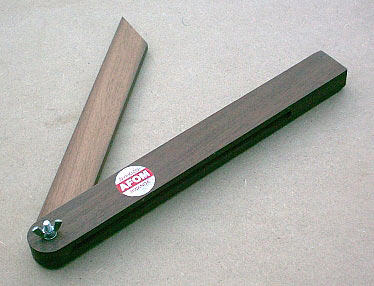
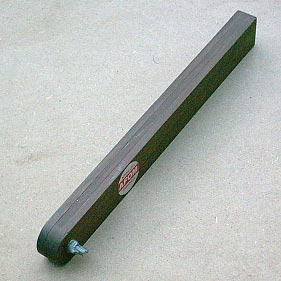
Wooden bevel; when closed, the separate parts can hardly be seen!
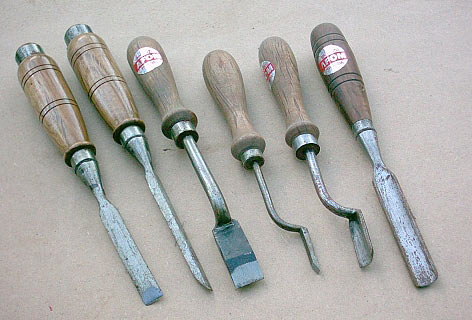
From left to right: 13mm chisel; 10mm mortising chisel; special dogleg
chisel, large; special dogleg chisel, small; dogleg gouge; gouge
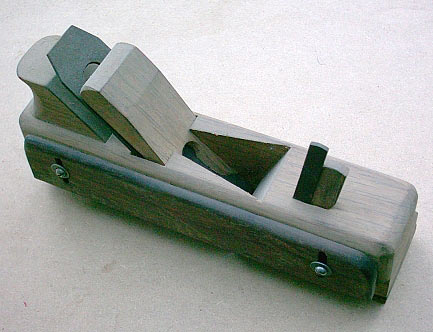
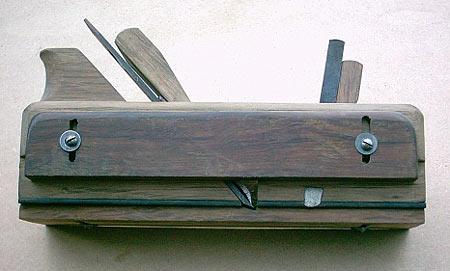
Filester plane with nicker
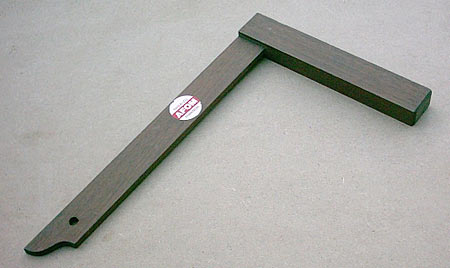
Apprentices had to make four of these squares that had to fit perfectly
when ‘crossed’ together
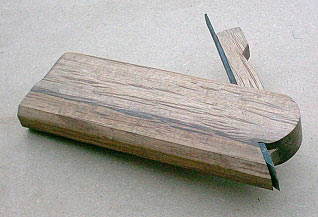
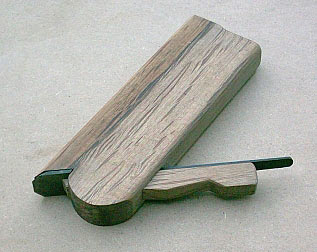
Plane to cut the inlet for an octagonal muzzle loader barrel
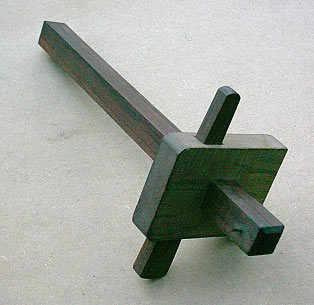
Simple marking gauge
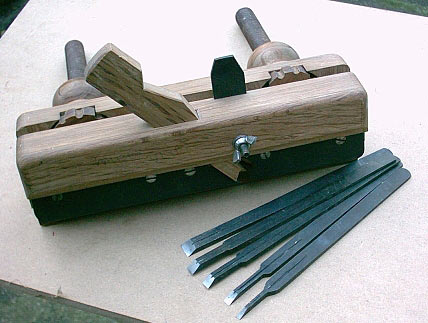
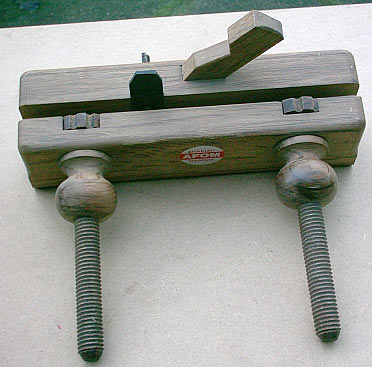
Fully adjustable plough plane with wooden stems and nuts, a nicker
and six irons
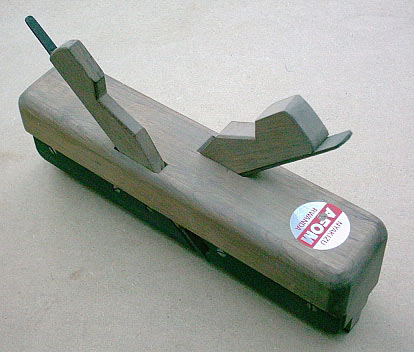
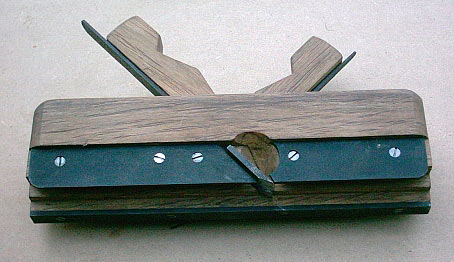
Plane for forming tongues and grooves
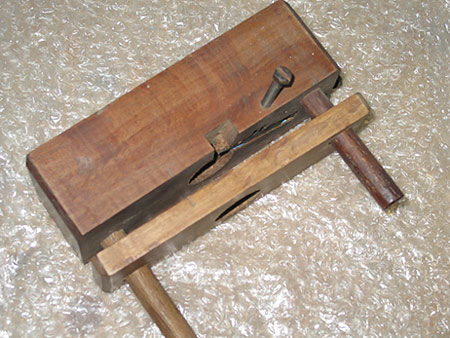
The screw box, showing the alignment guide
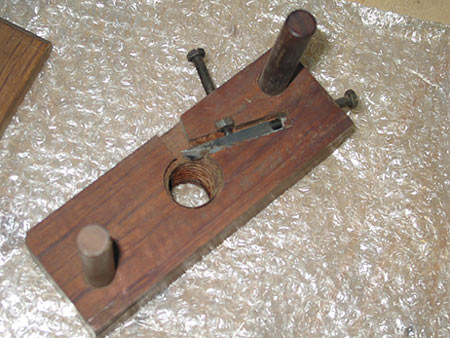
The screw box, showing the cutter and the bolts for adjusting it
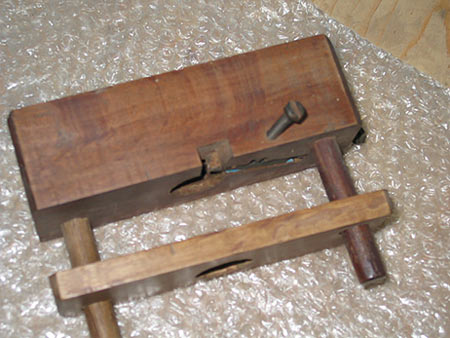
Another view of the screw box with the alignment guide
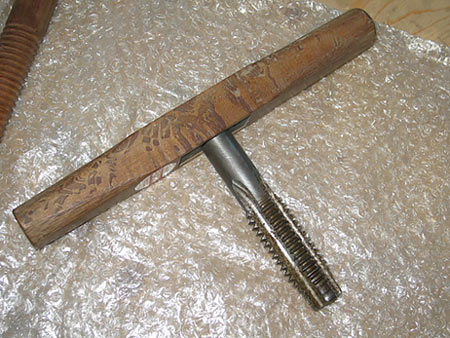
The wood screw tap in its Rwandan stock
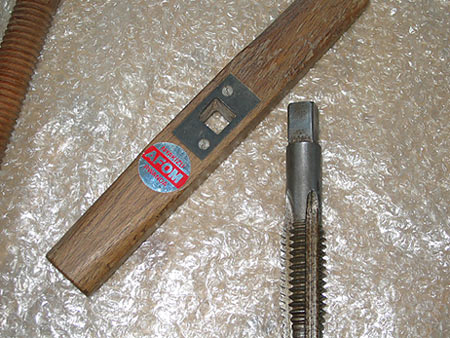
The tap removed from the stock
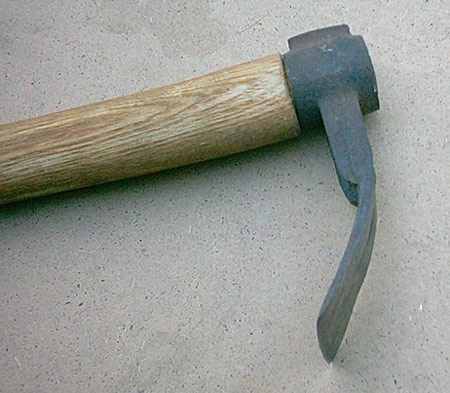
Not from Rwanda, but from Sudan: This adze was made from a truck engine connecting rod